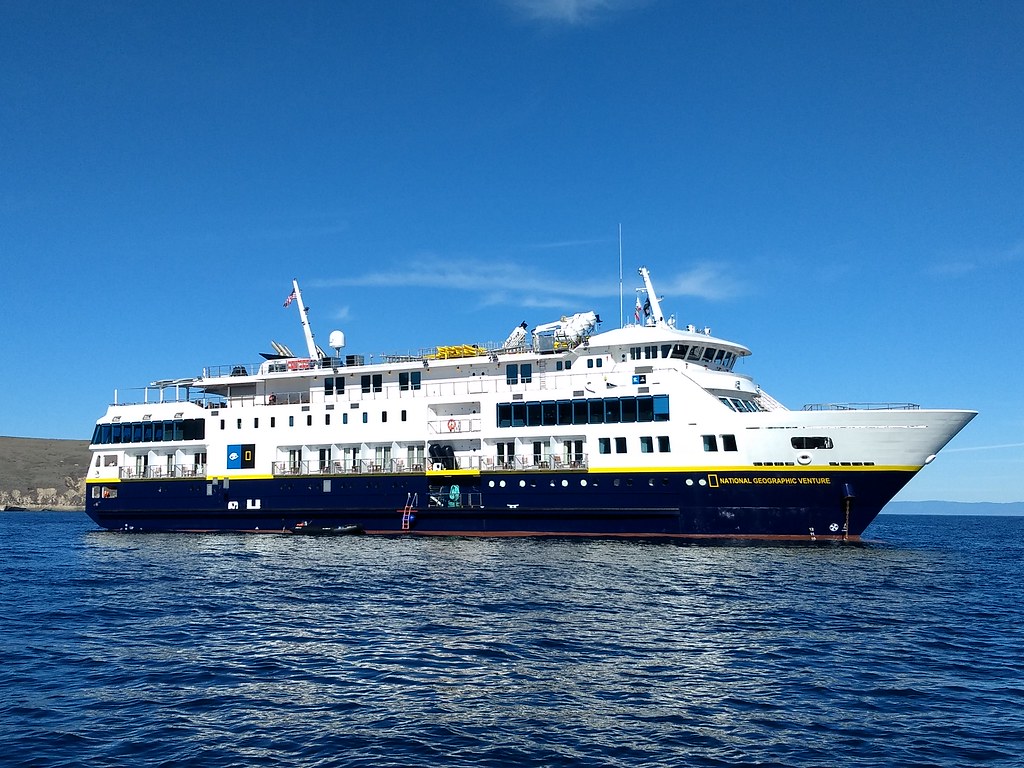#expeditioncruising .
While some like to refer to them as California's Galapagos on account of the world's cutest little fox (Urocyon littoralis) and its six subspecies, the Galapagos connection is pretty thin thereafter.
 |
| Brand new: National Geographic Venture at anchor off Santa Rosa (RE) |
While some like to refer to them as California's Galapagos on account of the world's cutest little fox (Urocyon littoralis) and its six subspecies, the Galapagos connection is pretty thin thereafter.
The Channel Islands were formed by uplift as opposed to volcanic and were connected to each other as recently as 15,000 or so years ago leaving around 140 endemic species of plant and animal behind. They were once as close as just a few miles from the mainland, making it much easier for life to arrive by the 'wind, wings and water' method of biological dispersal.
 |
| Santa Rosa Island is about 42kms off the California Coast |
On top of that, their history of human presence extends right across their existence, first with the Chumash and Tongva Native Americans, then the Spanish, then the current US Americans mainly through ranching and military.
The best known of all the islands is in the Southern Group, Santa Catalina, or just Catalina which has a permanent population of around 4000 mainly in the resort town of Avalon.
See related story Catalina Island: All bets are off
On our first day ashore on the inaugural voyage of Lindblad Expedition – National Geographic's brand new vessel and sister ship to last year's NG Quest, the National Geographic Venture, is here on Santa Rosa in the northern sector. This former ranch has had all non-native mammals removed or eradicated including pig, elk and cattle and a program of conservation and rehabilitation begun by the US National Park Service.
 |
| Channel Island Fox recently removed from the endangered list (Chuck Graham) |
A campground has been established and hiking is one of the favoured recreational pursuits along with kayaking. Even so, visitation to the islands generally is still pretty limited, Santa Rosa in particular.
 |
| Hikers descend from Cherry Canyon on Santa Rosa Island (RE) |
Groups set out on their own with some choosing a relatively demanding hike to see the rare Torrey Pine trees, while I joined a group for a moderate climb and hike around Cherry Canyon. We spotted a couple of the island's endemic birds and even caught a glimpse of the elusive fox which weighs just 4kgs and stands about 30cm high – just 25 per cent of the mainland grey fox it is descended from.
As something of an expedition-head myself, it's the in-depth interpretation by qualified experts (with human communication skills) that appeals to me most about Lindblad. The recent spike in interest in expedition travel has enabled Lindblad to embark on a substantial fleet expansion and the 100-guest NG Venture (as a follow up to NG Quest last year) completes this pair for use on West Coast, Alaska, Mexico and Caribbean itineraries.
Our journey continues south to Catalina Island and Mexico.
For more information on Lindblad – National Geographic journeys, see www.expeditions.com

No comments:
Post a Comment